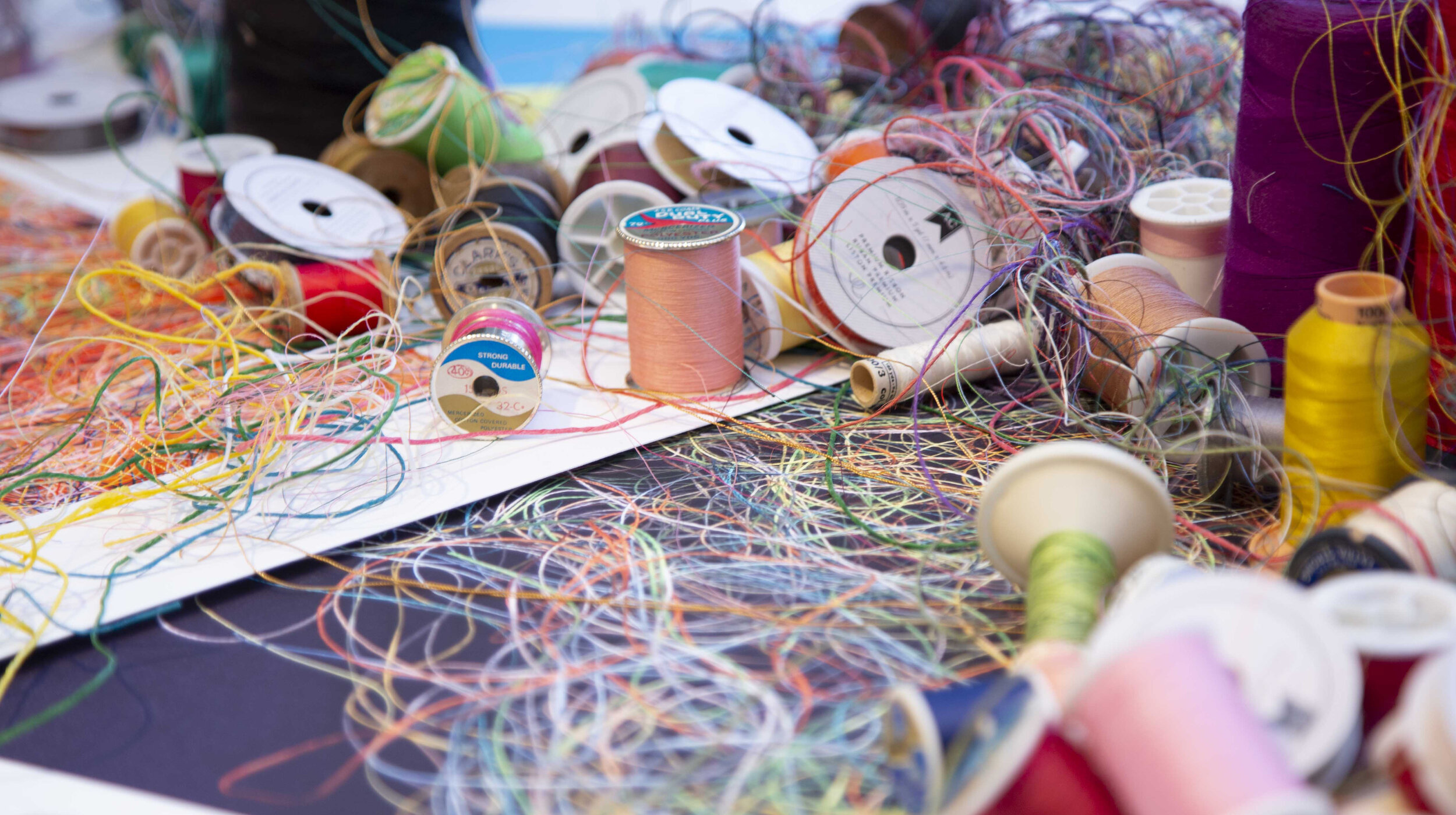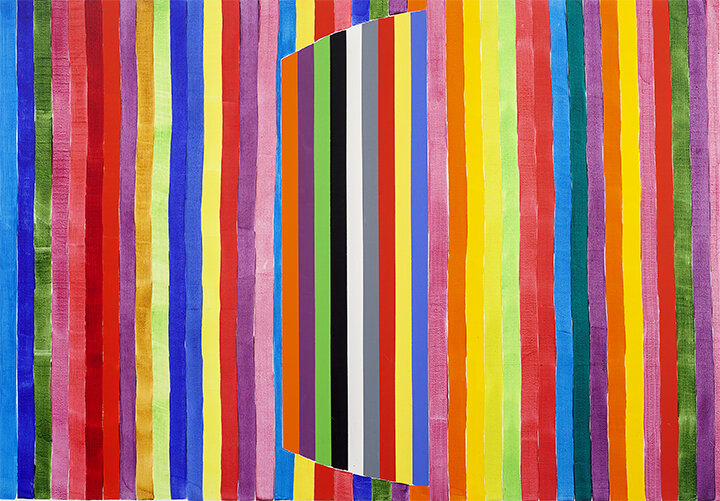
BLOG
ENTERING THE HIGHWAY CLOVER OF MY PAINTING CAREER
I was raised to think that art history evolved linearly - a straight line from Giotto to Pollock. I was not prepared for the halting, meandering movement of a career in art, where you race forward with one idea, re-track steps, add something new, abandon a direction and end up end up in the middle of a hi-way clover wondering which way to go.
GOYA ON GARBAGE
The last time I was a resident at A.I.R Vallauris in 2008, I left a box of materials. This time I decide not to take any materials with me and to just make use of what is in the box and whatever I find in the street. I have two notions about how to use my time. One, is to experiment, respond to the moment and not plan everything out. The other is to look at Goya's paintings and see if there is a way to distill their essence into something abstract. I didn't expect to do these two things together. When I open the box, I have plenty of paint, some brushes, and several pieces of 300 lb Fabriano watercolor paper. But what really excites me, is the box itself. It sat in a dry shed for eight years. The cardboard is soft and no longer has much structural strength. One side is white. I tear off one of the flaps and start painting.
ARTIST COLLABORATIONS: New Technology Makes Collaboration a Breeze
Artist collaboratives can be a tricky business, but try doing it with neither the internet or even a computer. Years ago I collaborated with the brilliant, contemporary composer Henry Brant on a piece called "Inside Track", which was played at the Holland Festival. My part in it was that I made slides of dozens of paintings on paper that were displayed on four projectors, which were "played" by two percussionists. Since the piece was performed in Holland, I never got to see it.Let's break down that last sentence. "I made dozens of slides." We are talking about real slides, physical slides; slides that take a week to process in a film lab; slides made out of film and cardboard, that can't be cropped, but rather have to be taped with physical tape to block out anything you don't want the viewer to see. "The slides were 'played' on four projectors"; yes, these were slide projectors, all mechanical, nothing electronic about them. They were noisy, had different lenses, could overheat and burn the slide. Or if you used the projection long enough, the slide just faded or turned brown. The button to forward the slides was not always reliable, nor was it easy to control the speed of the advancement. The percussionists must have been very talented.
EVERYTHING IS REAL
EVERYTHING IS REAL is a group of paintings that are both abstract and representational. Each image in the series exists in the real world – an old board of insulation, an industrial garage door, a silo and corn crib, a track in the mud and wrapped cargo on pallets.
At the same time, each has been composed to accentuate the inherently abstract qualities of the reflective surfaces and their interplay with light.
AS WE WAIT OUT THE HURRICANE
As a child I spent my summers on Fire Island in my Grandfather's four story Victorian "cottage" on the ocean front. He bought it at the turn of the last century in Edith Wharton's time.
Each night during dinner the sun set directly down the center of the window of the dining room. When my Grandfather lived there, even though it was summer, dinner was a formal affair.
By the time my family took over the dining room table, the white linen suits were long gone, replaced by wet bathing suits and bare feet. I sat next to my Dad and on the other side of the table a built-in cabinet was filled with formal pink and white china and Cranberry glassware. We never touched it.
Then one summer my mother packed it up and took it home. That winter, in a storm much like this one, the "cottage", a monument to a by gone era, was washed into the ocean.
THE AURORA BOREALIS IN A ZIP LOCK BAG : Essay about Leslie Parke's New Paintings by Christopher Millis
Little do I remember of the astronomy lecture I attended twenty some years ago on a warm summer night in an observatory on what may be the last densely wooded tract of land in Cambridge. What I do remember is that the lecture put me in a kind of swoon. For the first time in my life, science and poetry became one. Somehow a talk on chaos theory and its relation to the order of the universe – randomness as the predictable and necessary precursor to design – had the heft and elegance and perspicacity of a poem you want to memorize or a painting you don’t want to leave.
Leslie Parke’s paintings live at the same intersection where patterns court chaos, abstraction approaches the figurative and stasis hovers on the cusp of implosion. Her paintings are charged by contradictions: impersonal grids softened by sunlight; watery washes with metallic spikes; a cathedral of squiggles above a perfectly triangular black hole; the aurora borealis in a zip lock bag.
STILL LIFE - THE STORY
While in Paris, Dégas' close friend Giovanni Boldini painted a still life on a canvas that measured 47 1/4 inches high by 15 1/4 inches wide.
GEORGIA ON MY MIND: A Visit to Georgia O'Keeffe's Home and Landscape
O'Keeffe left New York to take up residence first on Ghost Ranch and then in Albiquiu, New Mexico.


















